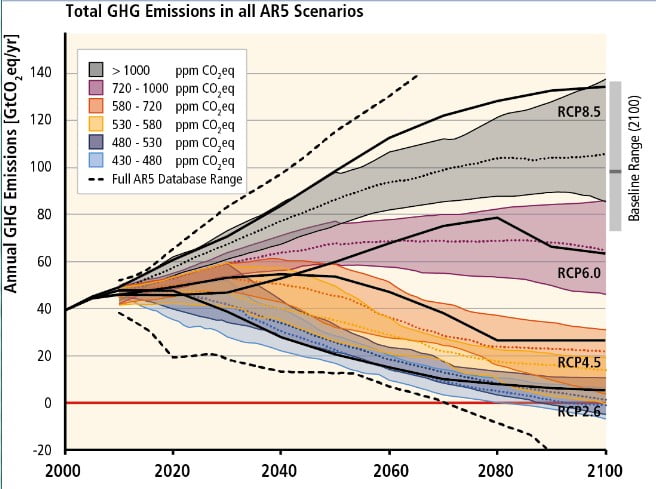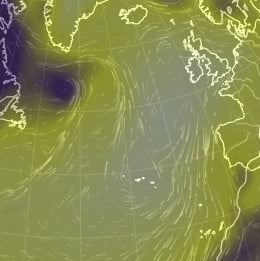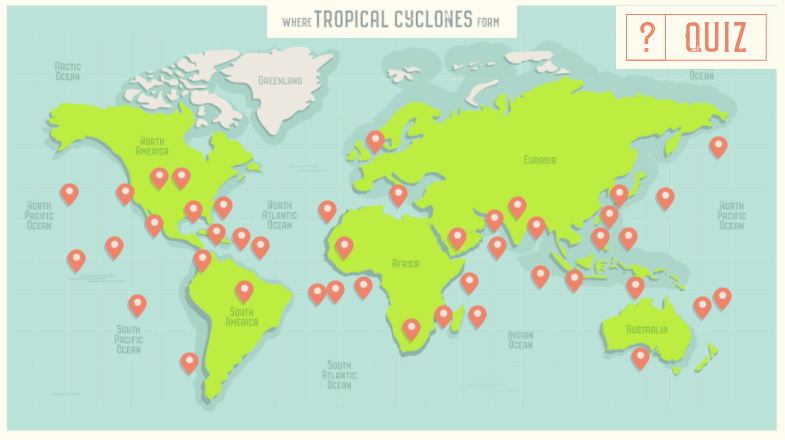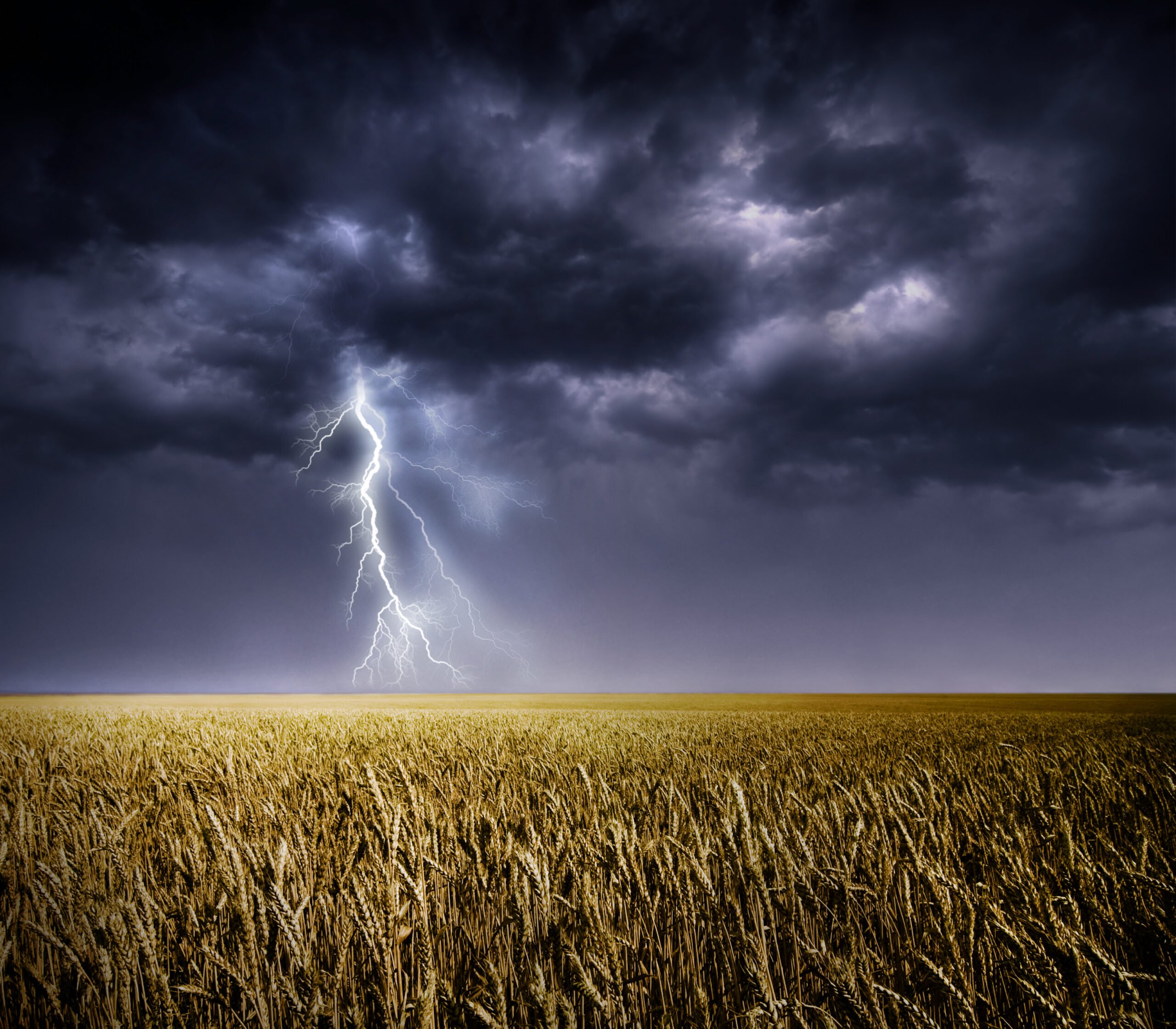Climate change and urban areas
C.2.6 Cities intensify human-induced warming locally, and further urbanization together with more frequent hot extremes will increase the severity of heatwaves. Urbanization also increases mean and heavy precipitation over and/or downwind of cities and resulting runoff intensity.1
The table below shows the efficiency of various factors at warming up or cooling down neighbourhoods of 3 urban areas. Overall, cities tend to be warmer than their surroundings. This is called the ‘urban heat island’ effect. Cities and urban areas tend to be warmer due to extra warming caused by human activities such as industrial processes, but also because urban surfaces tend to be darker coloured and drier than rural surfaces.

Recall that a positive figure represents a temperature rise and a negative figure represents a temperature decrease.
- Calculate the difference between the worst- and best-case scenarios.
- Which factor has the greatest variability between the best and worst case scenarios?
- Which factor has the smallest variability between the best and worst case scenarios?
- Using the average change data, how much additional temperature change could there be in cities that have no sources of water & no vegetation?

- Complete the graph by adding the average change to city areas temperature for each of the five factors shown in the table.
- Which of the five factors shown has the biggest warming impact in cities?
- Which of the five factors shown has the biggest cooling impact on a city?

Image source: Google maps
- Which of the following locations would be most likely to….
- Feel cooler during a summer heatwave?
- Feel too hot in a summer heatwave?
- Have people wearing shorts and a t-shirt in summer?
- Observe the tarmac on the roads melt in a summer heatwave?
According to the IPCC in the future:
- Further urbanization will amplify the projected air temperature change in cities regardless of the characteristics of the background climate, resulting in a warming on minimum temperatures that could be as large as the global warming itself.
- Compared to present day, large implications are expected from the combination of future urban development and more frequent occurrence of extreme climate events, such as heatwaves, with more hot days and warm nights adding to heat stress in cities.
Using these statements, what are the two factors that will cause temperatures to rise in urban areas?
Imagine that you could redesign the city to limit the effects of climate change. Make a list of all of the things that you could do to reduce the impact of climate change on your chosen city. Next, consider the strengths and weaknesses of all of those options. You might want to consider using a table like the one below;

Using the urban areas fact sheet
- Read very carefully through the fact sheet from the IPCC, about the impact of climate change on urban areas. You can access it here – Urban Areas fact sheet (ipcc.ch)
- Explain why urban areas can influence the temperatures locally:
- Suggest how urbanisation might affect the water cycle within urban areas. Make a list below;

Source: IPCC, 20212
Using the map above, identify;
- The city with the greatest increase in temperatures
- The city with the smallest increase in temperatures
- A city where the temperature has not changed
- The city where urban effects have caused the largest relative share of total warming
- The city where urban effects have caused the smallest relative share of total warming
- The areas of the world but have heated the most between 1950 and 2018
- An area of the world which has experienced cooling in the same time period
- Considering what you have already learned, suggest reasons why some cities have warmed more than others

Source: IPCC, 2021 2
Using the graph from Japan answer the following questions;
- In 1900 which area was the warmest?
- In the year 2000 which area was the warmest?
- Calculate the temperature difference between the urban and rural areas of Japan in 1900.
- Calculate the temperature difference between the urban and rural areas of Japan in the year 2000.
- In which year did urban temperatures surpass rural temperatures for the first time?
- Suggest reasons why Tokyo is now significantly warmer than Choshi
- Describe the general patterns on the graph.
According to the IPCC:
- The difference in observed warming trends between cities and their surroundings can partly be attributed to urbanisation
- Urbanisation has exacerbated changes in temperature extremes in cities, in particular for night time extremes.
One study examining the 2003 heat wave in Europe that killed upward of 70,000 people found that night-time temperatures were a key indicator of the health risk from high temperatures. There’s also research that shows high night-time temperatures disrupt sleep. Without relief from the heat, the stresses on the body mount.
While it may cool off after the sun sets during a heat wave, it may not cool off enough for people who have been exposed to high temperatures all day. That leads to a higher cumulative exposure to heat.
Extreme heat is one of the deadliest weather phenomena in the world. There are direct health effects like heat stroke, (when body temperature rises above 40C, leading to organ failure) and heat exhaustion.
Prolonged periods of high temperatures cause cardiac and respiratory disease leading to excess deaths, particularly in older people.
Simplify the information above into the flow chart below:

Explain why the fact that urbanisation has increased night time extremes of temperature could pose health problems for people who live in cities.
Sources
- IPCC, 2021: Climate Change 2021: The Physical Science Basis. Contribution of Working Group I to the Sixth Assessment Report of the Intergovernmental Panel on Climate Change [Masson-Delmotte, V., P. Zhai, A. Pirani, S.L. Connors, C. Péan, S. Berger, N. Caud, Y. Chen, L. Goldfarb, M.I. Gomis, M. Huang, K. Leitzell, E. Lonnoy, J.B.R. Matthews, T.K. Maycock, T. Waterfield, O. Yelekçi, R. Yu, and B. Zhou (eds.)]. Cambridge University Press. In Press. P.34. Accessed 28th November 2021 at Sixth Assessment Report (ipcc.ch)
- IPCC.ch. 2021. Regional fact sheet – Urban Areas. [online] Available at: https://www.ipcc.ch/report/ar6/wg1/downloads/factsheets/IPCC_AR6_WGI_Regional_Fact_Sheet_Urban_areas.pdf [Accessed 5 December 2021].





